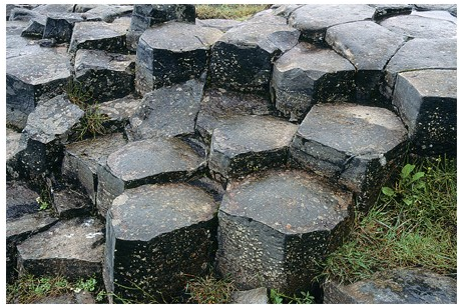How did the joints in this photograph form?

A) From uplift
B) From burial
C) From tectonics
D) From weathering
E) From cooling
E) From cooling
You might also like to view...
What is the approximate depth of the caldera (from the rim down to the floor)?
The question is based on Map T-2, the “Umnak, Alaska,” topographic map (scale 1:250,000; contour interval 200 feet), Map T-21b, a satellite image; and Figures 35-3 and 35-4, a shaded relief map and a stereogram showing the Okmok Caldera (53°25'33"N, 168°07'38"W) on Umnak Island in the Aleutian Islands. What will be an ideal response?
One of the main roles of plants in biogeochemical cycles is to
A) reduce the rate of weathering. B) decrease the amount of time that water remains in contact with rocks and soils. C) extract carbon dioxide from the atmosphere. D) harden the soils.
________ occurs when the relative humidity is 100%
A) Saturation B) Evaporation C) Sublimation D) Deposition
Gene sequence data revealed that birds are more closely related to ________ than to ________.
Fill in the blank(s) with the appropriate word(s).